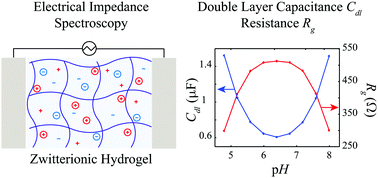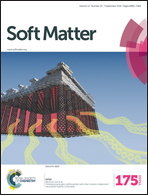A mathematical model for electrical impedance spectroscopy of zwitterionic hydrogels
Abstract
We report a mathematical model for ion transport and electrical impedance in zwitterionic hydrogels, which possess acidic and basic functional groups that carry a net charge at a pH not equal to the isoelectric point. Such hydrogels can act as an electro-mechanical interface between a relatively hard biosensor and soft tissue in the body. For this application, the electrical impedance of the hydrogel must be characterized to ensure that ion transport to the biosensor is not significantly hindered. The electrical impedance is the ratio of the applied voltage to the measured current. We consider a simple model system, wherein an oscillating voltage is applied across a hydrogel immersed in electrolyte and sandwiched between parallel, blocking electrodes. We employ the Poisson–Nernst–Planck (PNP) equations coupled with acid–base dissociation reactions for the charge on the hydrogel backbone to model the ionic transport across the hydrogel. The electrical impedance is calculated from the numerical solution to the PNP equations and subsequently analyzed via an equivalent circuit model to extract the hydrogel capacitance, resistance, and the capacitance of electrical double layers at the electrode–hydrogel interface. For example, we predict that an increase in pH from the isoelectric point, pH = 6.4 for a model PCBMA hydrogel, to pH = 8 reduces the resistance of the hydrogel by ∼40% and increases the double layer capacitance by ∼250% at an electrolyte concentration of 0.1 mM. The significant impact of charged hydrogel functional groups to the impedance is damped at higher electrolyte concentration.


 Please wait while we load your content...
Please wait while we load your content...